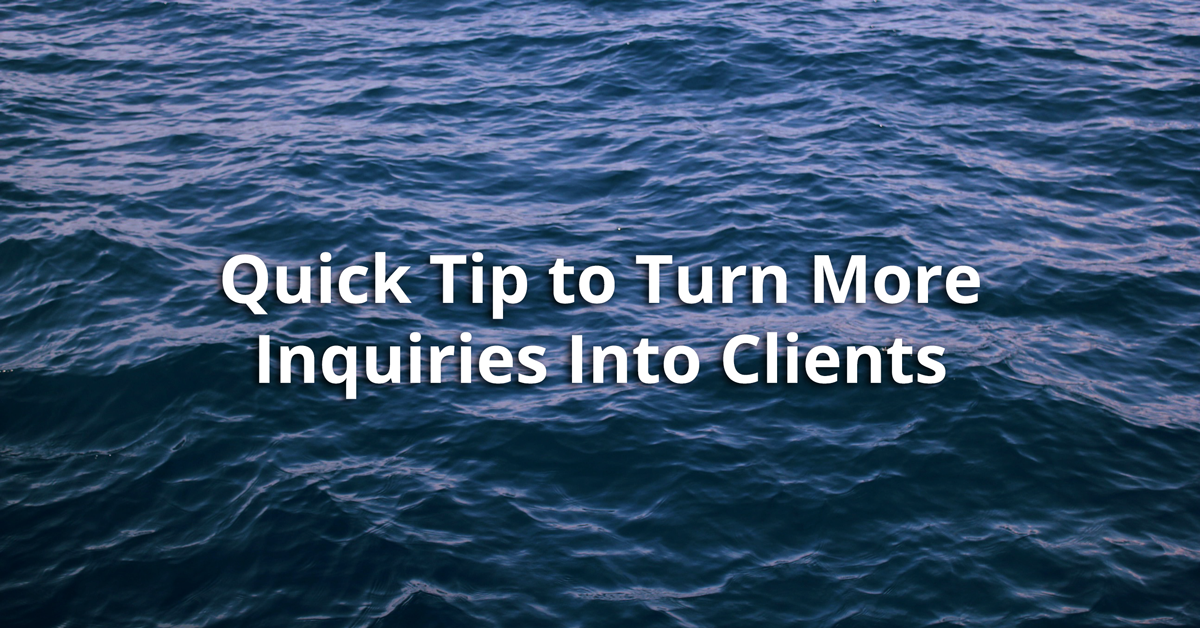
Turn Guest Inquiries Into Reservations: The Ultimate Follow-Up Guide
The hum of anticipation. The ping of a new email. A guest inquiry – the sweet sound of potential revenue. But an inquiry is just the beginning. Turning that initial spark of interest into a confirmed reservation requires a strategic, empathetic, and – dare we say – delightful follow-up. This isn’t about aggressive selling; it’s about nurturing a connection and guiding your potential guest towards the “book now” button.
This guide will equip you with the tools and tactics to transform those inquiries into bookings, maximizing your occupancy and revenue.
Phase 1: The Golden Hour – Immediate Response is Key
Think of the first few hours after receiving an inquiry as the “golden hour.” A prompt response shows you value their interest and are attentive to their needs. Aim for a response within 60 minutes, if possible. A simple, personalized automated response acknowledging receipt is a good starting point. Then, delve into a more detailed response:
- Personalization is Paramount: Use the guest’s name. Reference specifics from their inquiry (e.g., “I saw you were interested in our ocean-view rooms…”).
- Address Their Questions Directly: Don’t leave any question unanswered. If you need more information, politely request it.
- Highlight Relevant Selling Points: Don’t just regurgitate your website copy. Tailor your response to their specific needs and interests. Are they looking for a romantic getaway? Highlight your couples’ packages. A family vacation? Focus on kid-friendly amenities.
Phase 2: The Nurturing Phase – Gentle Guidance and Added Value
Following the initial response, consider a gentle follow-up within 24-48 hours. This isn’t a hard sell; it’s about adding value and furthering the conversation.
- Offer Personalized Recommendations: Suggest activities or local attractions based on their interests. A local restaurant known for its seafood? A hidden gem of a hiking trail? This shows you care about their experience beyond just the booking.
- Showcase Visual Delights: Include high-quality photos or videos that highlight the features they’ve shown interest in.
- Address Any Lingering Concerns: Did they hesitate about pricing? Offer a limited-time special offer or highlight included amenities to sweeten the deal.
Phase 3: The Gentle Push – A Final Encouragement
After a couple of days, a final follow-up is warranted. This is your chance to gently nudge them towards booking without being pushy.
- Recap Key Selling Points: Briefly reiterate the benefits of choosing your establishment.
- Offer a Booking Incentive: A small discount, complimentary breakfast, or a welcome gift can tip the scales in your favor.
- Create a Sense of Urgency (Ethically): Mention limited availability for their desired dates or a deadline for a special offer. Avoid being overly aggressive.
Table: Follow-Up Timeline & Strategies
| Timeframe | Action | Strategy |
|---|---|---|
| Within 60 minutes | Acknowledgement & Initial Response | Personalized, detailed, address all questions |
| 24-48 Hours | Personalized Recommendations & Value Add | Showcase amenities, suggest local activities |
| 72 Hours | Gentle Push & Final Incentive | Limited-time offer, recap key selling points |
Phase 4: Beyond the Booking – Building Loyalty
The journey doesn’t end with a confirmed reservation. Positive post-booking communication can foster loyalty and encourage repeat business.
- Send a Confirmation Email: Provide all essential details, directions, and contact information.
- Pre-Arrival Communication: Send a welcome message a few days before arrival.
- Post-Stay Follow-up: Request feedback and express gratitude for their stay.
Beyond the Basics: Leveraging Technology
- Customer Relationship Management (CRM) Software: Streamline your follow-up process and track guest interactions.
- Automated Email Sequences: Set up automated emails to trigger based on specific actions (e.g., inquiry, booking confirmation).
- Live Chat Features: Provide immediate assistance and answer questions in real-time.
By implementing these strategies, you’ll transform guest inquiries from potential revenue into confirmed bookings, fostering positive relationships and building a thriving hospitality business. Remember, it’s about building a connection, not just making a sale. And in the hospitality industry, genuine connection is priceless.

Additional Information
Deep Dive: Turning Guest Inquiries into Reservations – An Analytical Perspective
The success of any hospitality business hinges on its ability to convert guest inquiries into confirmed bookings. While a “Ultimate Follow-Up Guide” provides a foundational framework, optimizing conversion requires a deeper analytical understanding of the process. This analysis will delve into key aspects beyond a simple checklist, focusing on data-driven strategies for maximizing reservation rates.
I. Understanding Inquiry Segmentation and Personalized Responses:
A generic follow-up email rarely yields optimal results. The effectiveness of a follow-up depends critically on understanding who is inquiring. Segmentation based on several factors is crucial:
-
Inquiry Source: Guests from OTAs (Online Travel Agencies) have different needs and expectations than those contacting directly via email or phone. Direct inquiries often indicate a higher level of interest and engagement. Follow-up strategies should reflect this. For example, an OTA inquiry might need a concise confirmation of availability and pricing, whereas a direct email might warrant a more personalized narrative highlighting the unique aspects of the property or experience.
-
Inquiry Content: Analyzing the language and questions within the inquiry provides valuable insights into guest preferences and priorities. A guest focused on budget might need a detailed breakdown of pricing, while one emphasizing experience requires highlighting unique amenities or activities. Natural Language Processing (NLP) can automate the categorization of inquiries for more efficient responses.
-
Past Guest Behavior (if applicable): For returning guests, data on their previous stays can inform highly personalized recommendations and offers, significantly improving conversion rates. This could involve suggesting similar room types, offering upgrades based on past preferences, or highlighting new amenities.
II. The Power of Multi-Channel Follow-Up:
Relying solely on email is limiting. A multi-channel approach significantly increases the likelihood of connection. The optimal strategy depends on guest preference, but might include:
-
Automated Email Sequences: These are essential for efficiency but require careful crafting to avoid sounding robotic. Personalization tokens and conditional logic based on inquiry details are vital. For instance, if a guest inquired about a specific date, the automated email should confirm availability for that date, rather than generic availability.
-
SMS/Text Messaging: For quicker responses and higher engagement, especially for younger demographics. A concise text message confirming availability or offering a limited-time discount can be highly effective.
-
Phone Calls: Though time-consuming, a personal phone call can often overcome objections and build rapport, particularly for high-value bookings or complex inquiries.
III. Optimizing the Follow-Up Timing and Content:
The timing of follow-ups is critical. Delayed responses significantly reduce conversion chances. Consider:
-
Immediate Acknowledgement: An automated response within minutes acknowledging receipt of the inquiry demonstrates professionalism and responsiveness.
-
Strategic Follow-ups: A series of strategically timed follow-ups (e.g., 24 hours, 48 hours, then a final week-long email) should progressively add value, rather than simply reiterating information. Each email should contain something new – a special offer, a link to positive reviews, or information addressing a potential concern raised in the inquiry.
-
Urgency and Scarcity (used sparingly): Highlighting limited availability or special offers with deadlines can create a sense of urgency, but overuse can be counterproductive.
IV. Measuring and Analyzing Follow-Up Effectiveness:
To continuously improve the process, data analysis is essential. Key metrics include:
-
Inquiry-to-Reservation Conversion Rate: This is the primary metric to track. Analyzing conversion rates for different segments (e.g., inquiry source, booking channel) can identify areas for improvement.
-
Response Time: Tracking the time taken to respond to inquiries helps assess efficiency and identify bottlenecks.
-
Email Open and Click-Through Rates: These help evaluate the effectiveness of email subject lines and content.
-
Customer Acquisition Cost (CAC): This helps in assessing the profitability of the follow-up strategy.
V. Case Study Example:
A boutique hotel implemented a personalized multi-channel follow-up system, segmenting inquiries based on source and content. By incorporating automated email sequences, targeted SMS messages for last-minute bookings, and personalized phone calls for high-value inquiries, they saw a 25% increase in their inquiry-to-reservation conversion rate within three months. This was further enhanced by A/B testing different email subject lines and content, leading to an additional 10% improvement over the following quarter.
In conclusion, while a basic follow-up guide provides a solid foundation, achieving exceptional conversion rates requires a data-driven, personalized, and multi-channel approach. Continuous monitoring, analysis, and optimization are key to maximizing the return on investment in guest engagement efforts.



